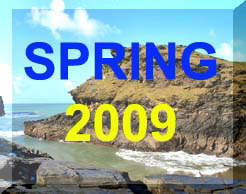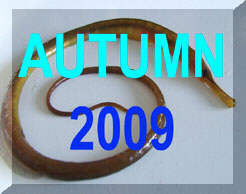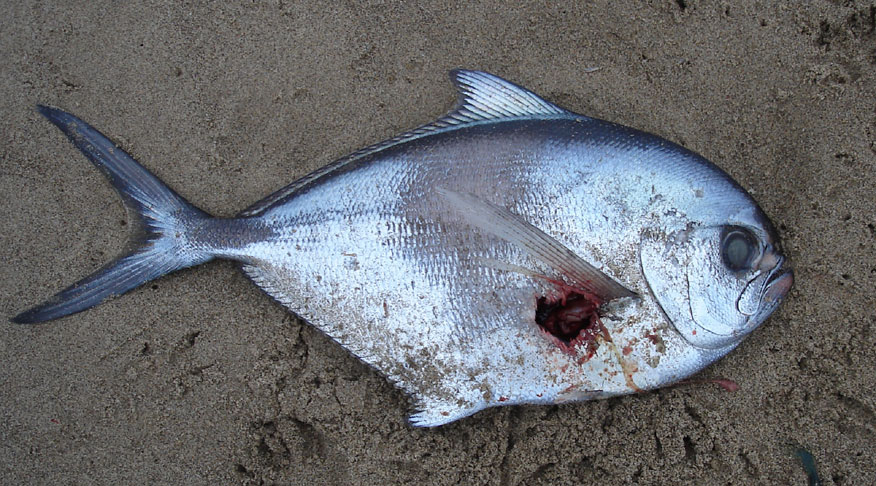EVENTS:
 27-29
March 2009
27-29
March 2009
Porcupine
Marine Natural History Society Annual Meeting
Topic:
Seashore
to Sea Floor
Venue:
University
of Plymouth, Davy Building Main Hall on Friday and Saturday
Coxside
Marine Centre in Plymouth on the Sunday, with access to microscopes
and running seawater.
Registration/putting
up posters/chatting with mates 9.30 - 10.00 Main Hall Davy Building Friday
27
March 2009
The
following speakers are confirmed; Roddy Williamson (Director of
the Marine Institute University of Plymouth), Alan Hughes (updating
the classification of deep sea sediment habitats, NOCS Southampton), Kerry
Howell (updating the classification of deep sea hard bottom habitats,
University of Plymouth), Chris Proctor (describing sea cave sponges
in SW England), Sally Sharrock (Devon Seasearch co-ordinator) andGraham
Oliver (Challenges in British Bivalve taxonomy), Karen Robinson
(Mapping
and Modelling Seabed biotopes) and John Bishop (Recent arrival of
non-native species in the South West.
Please
contact the local organisers; Maria Campbell (maria.campbell@plymouth.ac.uk),
Fiona Crouch (ficr@MBA.ac.uk), Keith
Hiscock (khis@MBA.ac.uk) and Jason
Hall-Spencer (jhall-spencer@plymouth.ac.uk
or call 0044 1752 232969) if you would like to attend and also let us know
if you would like to give a talk or a poster presentation at the meeting.
In keeping with tradition we are planning dive trips and visits to the
local shores on the Sunday.
LATEST
NEWS:
14
March 2009
A Dealfish
(Ribbonfish
family),
Trachipterus
arcticus, was washed
ashore dead at Seaton
Carew in the north-east of England on the North Sea coast near Hartlepool
Previous
Report
1
March 2009
An
unusual octopus was captured in a shallow water net off Brittany, France,
by Nick
Praed on the "Silver
Dawn" fishing out of Newlyn, Cornwall.
Expert
opinion identifed the octopus as the deep water species Haliphron
atlanticus . It was probably the smaller
male as the females can grow very
large.
They
are interesting animals which appear to only have only seven arms as the
eight one is very small. Records of its occurrence in the eastern Atlantic
are exiguous, with specimens caught off Ireland and off the Shetland Isles,
Scotland.
Full
Report
BMLSS
Octopuses
28
February 2009
A
mutant Edible
Crab, Cancer pagurus,had
a lucky escape from the pot after fishermen discovered it had a three-pincered
claw. The creature was transferred to the Blue
Reef Aquarium in Hastings after being hauled up in the fishermen’s
pots.
BMLSS
Abnormal Claws
24
February 2009
Another
Oarfish
(or Ribbon Fish),
Regalecus
glesne, was discovered at near some
cliffs at Tynemouth Pier, north-east England. This time the three metre
long fish was in a good condition.
Previous
Report
15
February 2009
Hundreds
of Heart
Urchins, Echinocardium cordatum,
were washed in on the wide sandy beach at
St Michel en Grève, (departement of Cotes d' Armor), a bay in northern
Brittany. The tide appears to go out by as much
as half a mile and the urchins were around the lowest tide mark (Chart
Datum).
BMLSS
Heart Urchin Strandings
13
February 2009
Three
Curled
Octopus,
Eledone
cirrhosa, were caught by commercial
fisherman Shane Petit
from on one of the Casquet banks to the west of Alderney in the Channel
Islands. Eledone cirrhosa
has only one row of suckers along each arm. This octopus is scarce in the
Channel Islands but a common species in the seas north of the English Channel.
Sealord
Photography
BMLSS
Octopuses
11
February 2009
Jamie
Le Tissier found a white-shelled Ormer,
Haliotis
tuberculata, at ELWS on the rocky
promontory off Cobo, on the west coast of Guernsey.

Richard
Tostevin, a retired ormer aquaculturist, has
never seen one and was very interested in the discovery.
Sealord
Photography
BMLSS
Ormers
9 February
2009
Guernsey
commercial fisherman Steve Fallaize
landed a Bogue,
Boops
boops, north of L'Ancresse off the
north coast of Guernsey. It weighed 566 grams.

Bogue
belong to the family Sparidae (Sea Breams).
They are common Mediterranean fish, but uncommon in Guernsey waters where
a few are caught every year. All the Guernsey records I have for
this fish come from the L'Ancresse area (north of Guernsey). To give
a sense of this fish's rarity Steve Fallaize
has never seen this fish before and he has been fishing commercially in
Guernsey waters since 1986. The scientific names is pronounced "Beau -
ops" and not "boops".
Sealord
Photography
1
February 2009
An
unusual discovery washed up on the shore at Hauxley near Amble
in Northumberland on the north-east coast of England was the decaying remains
of an Oarfish (or Ribbon Fish),
Regalecus
glesne. This is a deep water species
and the longest fish found in the oceans reaching a length of 11 metres.The
last
known British record was from Skinningrove,
Cleveland on the north-east coast in 2003.
BMLSS
Oarfish
BMLSS
Beachcombing
29
January 2009
Commercial
fisherman Steve Fallaize
caught a Two-banded Sea Bream,
Diplodus
vulgaris, in a gill net set over night
one mile off L'Ancresse off the north coast of Guernsey. It weighed 1011
grams.
Sealord
Photography
This
fish is a new record for the British Isles. It is principally a Mediterranean
species and is also found on the Atlantic Seaboard of continental Europe
and North Africa including Brittany where it is rare.
January
2009
Ray's
Bream,
Brama
brama, continue their strandings on the east coast of England and
Scotland. Most of them are found dead on the beach, intact or scavenged
by gulls, whilst occasionally they are discovered alive flapping in the
shallow water surf.
More
Reports
BMLSS
Beachcombing
British
Marine Life News 2008

Cornish
Marine Life 2008 (Ray Dennis Records)
BMLSS
Oil Disasters page






















